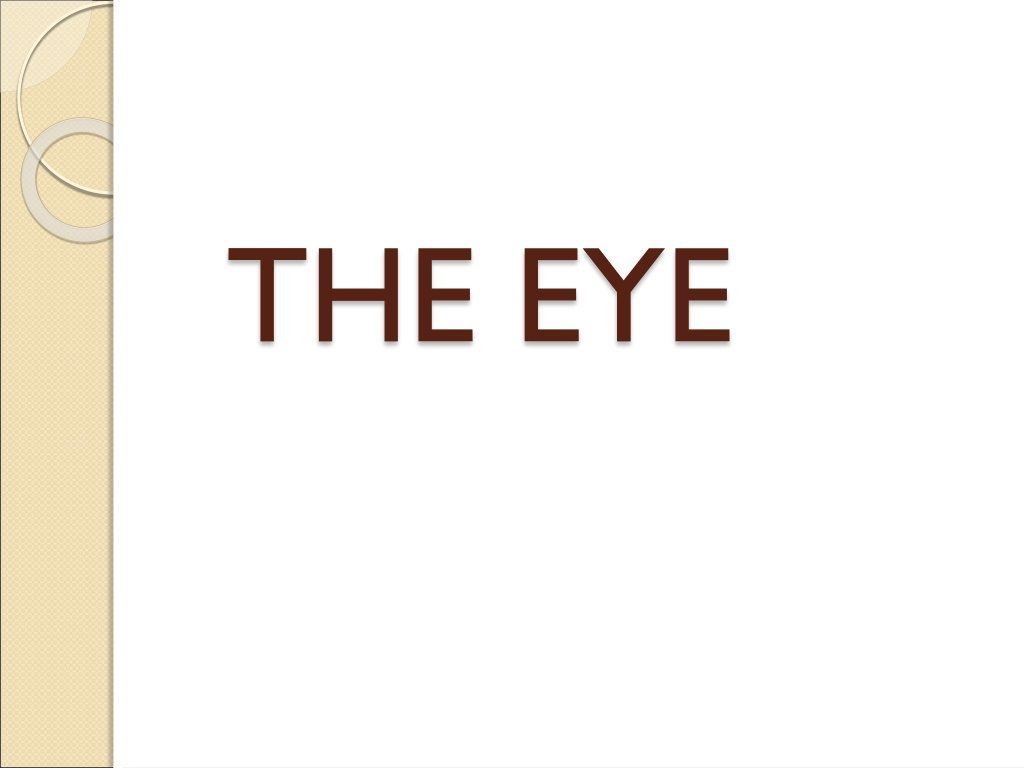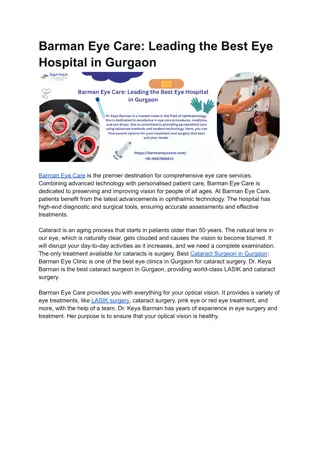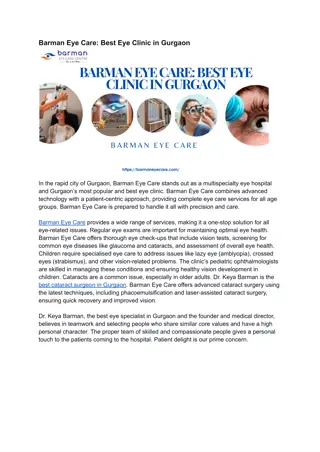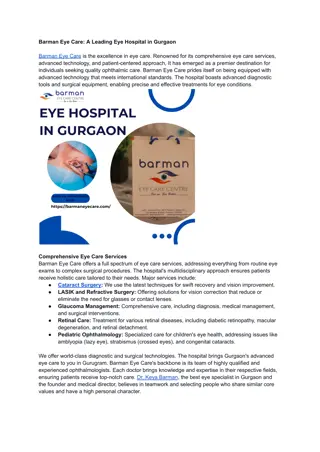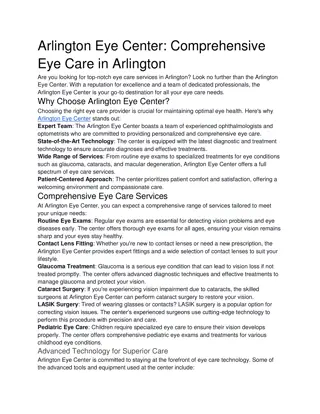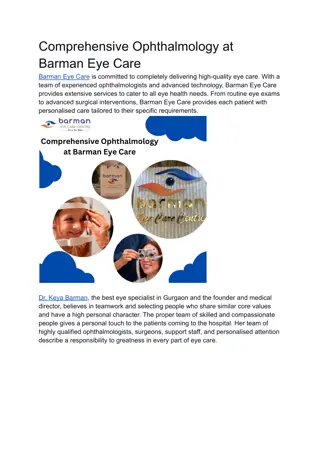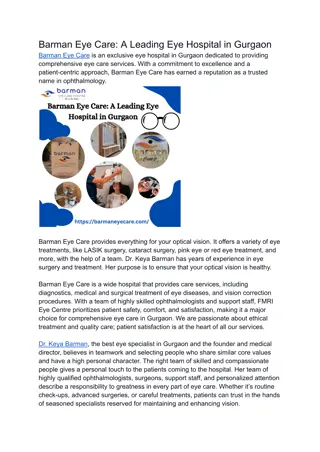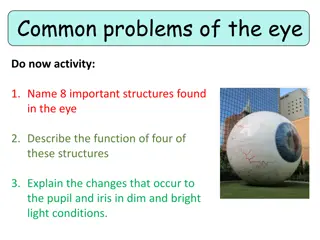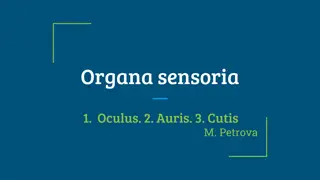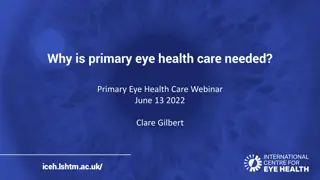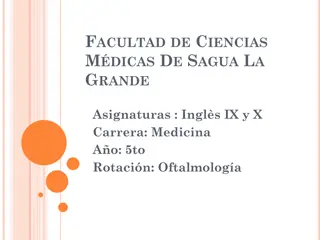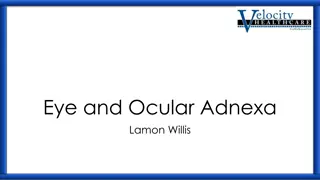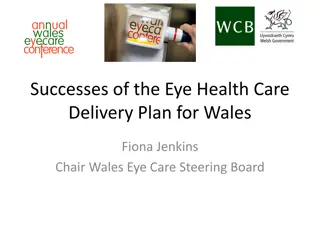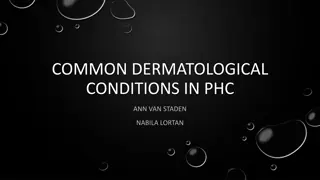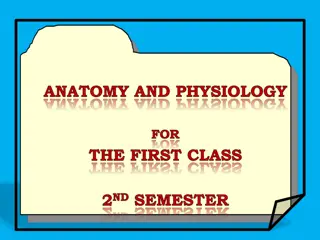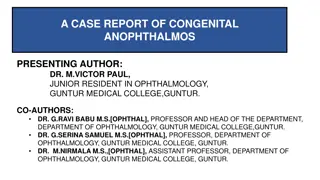Understanding Eye Health: From Anatomy to Treatment of Common Eye Conditions
Explore the anatomy of the eye, learn about common eye diseases like corneal laceration and cataracts, and understand their treatments. Discover the impact of cataracts on global blindness and the surgical options available for restoring vision. Follow a martial arts athlete's journey through corneal laceration treatment, emphasizing the importance of prompt and proper care for eye injuries.
Download Presentation

Please find below an Image/Link to download the presentation.
The content on the website is provided AS IS for your information and personal use only. It may not be sold, licensed, or shared on other websites without obtaining consent from the author. Download presentation by click this link. If you encounter any issues during the download, it is possible that the publisher has removed the file from their server.
E N D
Presentation Transcript
Common Disease of the Eye Corneal Laceration James is a 22 yrs old martial arts athlete who sustained a kick to his right eye 6 months ago. He sustained injury to his right cornea laceration due to the contact lens He was seen by an opthalmologist and treated for several weeks But he still has blurred vision in his right eye It is best seen under slit lamp, after flourescin staining
Corneal Laceration The corneal injury is visualised as a white patch on the cornea
Flourescin Staining Flourescin staining selectively stains damaged corneal tissue
Further Treatment In full thickness corneal laceration, aqueous humour may leak out resulting in distortion of the shape of the eyeball. He wanted to continue fighting, so further treatment with Phototherapeutic keratectomy (PTK) or Corneal Transplant. Failure to do so, he may not be able to clear his Pre-participation examination with 'one good eye'.
Cataracts Cataracts - clouding or opacification of the natural lens of the eye Cataract Vision
How can cataracts be treated? The only treatment for cataracts is surgical removal. Cataract surgery is the removal of the eye lens and replacing it with an artificial one. Two basic types of surgical procedures to treat cataracts (1) Phacoemulsification - utilizes a small incision on the side of the cornea to access the cataract with a tiny probe. Ultrasound is then used to break up the lens for removal by suction. This is the most popular kind of cataract surgery. (2) Extracapsular surgery -This procedure requires a longer incision. The cloudy core is removed intact followed by removal of the remaining lens by suction. If the eye is otherwise healthy, an intraocular lens may be used to replace the natural, cloudy lens. This lens requires no care. Post-operative orders carefully. Not to bend over or lift heavy objects for a few days or weeks. A protective eye shield will reduce the chances of injury to the eye.
Professor Fred Hollows work to restore sight to the cataract blind in developing countries was ongoing 15 years after his death. Cataracts are the cause of about half of all cases of avoidable blindness in developing countries and they can be removed with a relatively simple operation costing as little as $25. FRED HOLLOWS PERFORMING AN OCULAR EXAMINATION IN VIETNAM
Retinal Detachment Can be caused by trauma e.g. boxing Sudden acceleration and deceleration bungee jumping, car accidents
Avulsed Eye ball Will it ever work again? What will need to be intact for it to work?
This powerpoint was kindly donated to www.worldofteaching.com http://www.worldofteaching.com Is home to well over a thousand powerpoints submitted by teachers. This a free site. Please visit and I hope it will help in your teaching
